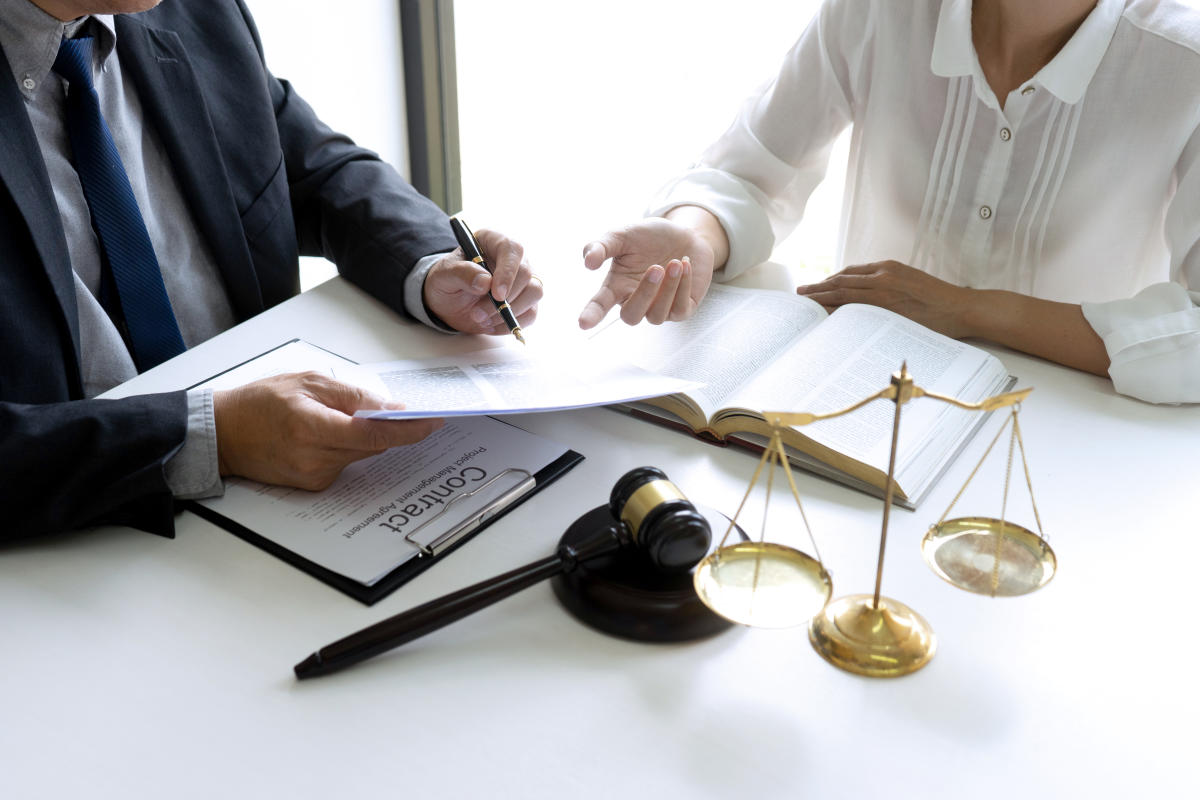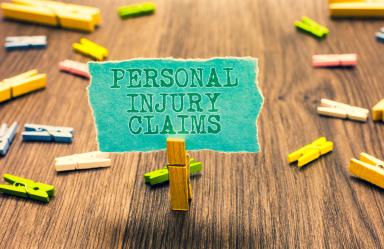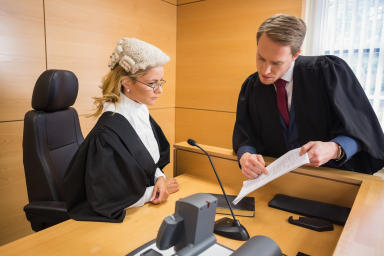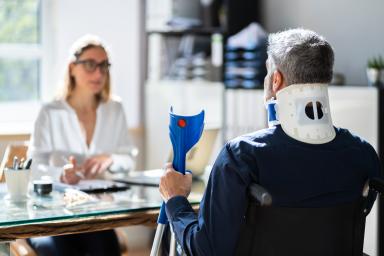Determining and Proving Liability in Personal Injury Lawsuits

Personal injury occurs when someone has suffered physical, mental, or emotional damage due to another party’s negligence or intentional misconduct. There are many examples of how personal injuries can happen. The most common causes are motor vehicle accidents, falls, dog bites, and medical malpractice. In the U.S., it is estimated that over 400,000 personal injury lawsuits are filed each year, according to recent data based on findings from the U.S. Department of Justice and Bureau of Justice Statistics. Of those lawsuits, roughly 4% actually go to trial. Those that don’t go to trial are often settled out of court or dropped. In any personal injury case, whether or not it goes to trial, proving liability (fault) is a vital part of proving who is responsible for compensating the injured party for their damages. This article addresses the most common ways to determine and prove personal injury liability.
How Your Personal Injury Attorney Proves Liability
According to the CDC’s National Center for Health Statistics, approximately 31 million people per year in the U.S. are injured in a manner that requires a physician’s care. If you find yourself among those 31 million, and you feel litigation is in order, hiring a personal injury attorney who will work to investigate and prove which party bears liability can help ensure that you receive appropriate compensation. Here are some ways your personal injury lawyer might attempt to prove liability.
Use Negligence to Prove Fault
In the majority of personal injury lawsuits, the injured party claims that the alleged party at fault was negligent. In legal terms, per the Oxford Languages definition, negligence is a failure to use reasonable care, resulting in damage or injury to another. Proving negligence requires demonstrating that the following four elements have been met:
Duty of care: The defendant was legally responsible for acting with the same level of caution that any reasonable person in similar circumstances would use in order to avert causing foreseeable harm to others. For example, in the case of a wet floor, a grocery store would need to put out a sign alerting people of the potential for slipping.
Breach of duty: The defendant breached a legal duty, or failed to act with the same level of care that others in the same circumstances would use, thus failing to keep the plaintiff from being harmed. Failure to put out a wet floor sign in the above example would constitute a breach of duty.
Causation: The defendant’s negligence was responsible for causing the injury.
Damages: The plaintiff has incurred damages as a result of the defendant’s negligence.
Other Ways to Prove Fault and Liability in Court
While most personal injury cases allege general negligence on the part of the accused party in order to prove who is at fault, there are other ways to determine liability. As defined by Cornell Law School, negligence per se occurs when a defendant has broken a statute or regulation and, in so doing, has breached their duty of care by law. Liability can be proven if an injury was caused on purpose by demonstrating that it resulted from intentional conduct. In some cases, a defendant is known to be responsible for committing an action, irrespective of what their intent or mental state was at the time. According to Cornell Law School, this is known as strict liability.
What’s the Difference Between Negligence, Strict, and Intentional Tort Liability?
When creating a case to prove who is at fault for a personal injury, it is important to understand the different types of liability and to provide incontrovertible information about how the injury came to pass so that there can be no question as to why the defendant is liable. Was the injury a result of careless negligence, or did the defendant act with intent? Did they (knowingly or unknowingly) break the law? Is it clear that they are the responsible party? When answered, all of these questions can help provide clarity about which type of liability they bear.
Intentional Tort Liability
A tort is a wrongful act, apart from a breach of contract, that causes harm to another person and can lead to legal liability. An intentional tort is when a wrongful act causing injury has been committed on purpose. Intentional tort liability is different from negligence liability in that the wrongful act was done knowingly, as opposed to being caused by mere recklessness. It differs from strict liability in that someone can be strictly liable whether or not they intentionally performed an action causing harm. Some well-known examples of intentional torts are assault, battery, fraud, and false imprisonment.
Negligence Liability
Unlike tort liability, which we know results from intentional wrongdoing, negligence liability stems from wrongdoing caused by carelessness, recklessness, or a simple lack of prudence. A person can be guilty of negligence with or without their knowledge. They may also be guilty of breaking the law as a result of their negligence, which could make them liable due to negligence per se. Negligence liability differs from strict liability in that a personal injury attorney must prove that the defendant was negligent. With strict liability, there is no question that the defendant committed the wrongful act that caused the injury and all you need to prove are damages.
Strict Liability
When liability exists without proving negligence, you have strict liability. In these cases, there is no question as to who is responsible for the wrongful act, and the wrongdoer’s mental state and intentions at the time of action are irrelevant. Unlike intentional tort liability, a defendant accused of strict liability may not have committed the act intentionally. There is still a possibility that they will be held liable even if the injury was caused by accident. Unlike negligence liability, there is no real burden of proof involved.
Defendants in a Personal Injury Case
If someone feels that they have been wrongfully accused in a personal injury case, there are many defenses an attorney can use, depending on the nature of the lawsuit.
Legal Defenses Against Negligence Claims
The key to an effective defense in a lawsuit involving negligence claims is disproving one or more of the four elements used to illustrate the defendant’s allegedly negligent actions. There are also legal doctrines that may help prove a person’s lack of negligence or limit their liability. Below are a few of the most common defenses against negligence claims.
Contributory Negligence: This is a failure of the plaintiff to act with caution and, in so doing, contribute to their own injury.
Comparative Negligence: This is the principle that the fault of each party involved in an accident depends on their individual contributions to the accident. Damages may be awarded according to each participant’s degree of fault, thus limiting how much the plaintiff may recover.
Assumption of Risk: This doctrine argues that if a person undertakes an activity, understanding the dangers involved, they are knowingly assuming these risks, and they may be barred from recovering damages stemming from any injury incurred while they voluntarily expose themselves to danger.
Legal Defenses to Intentional Torts
The most common defense for intentional torts is consent. If a person willingly consents to an act, they cannot claim it is an intentional tort. The defendant will need to prove that the plaintiff voluntarily gave consent and that they were of sound mental capacity at the time.
Other defenses that may be effective against intentional tort claims are listed below:
Self-Defense/Defense of Others: A person has the right to take action to defend themselves or others from being harmed. Proof that intentional tort was done in defense of imminent danger will be necessary.
Defense of Property: A defendant may claim they were protecting their property from being invaded or stolen when the intentional tort occurred. Laws around how much force can be used in such circumstances vary from state to state. The defendant may need to prove that the force used was proportionate to the plaintiff’s actions.
Necessity: Pertains to situations where a person is permitted to act wrongfully if doing so prevents greater harm to them or their property. The accused will need to prove one of the following:
their actions were the only way to prevent harm
they were not responsible for the threat of harm
they caused less damage than the harm that would have occurred if they hadn’t acted this way
Resources for Injured Folks
If you’ve been injured and you’re considering filing a claim, you’ll want to find a trustworthy and capable personal injury attorney in your area. They will be your best resource throughout the legal process. Before you speak with an attorney, check out this comprehensive guide on the recommended steps for hiring a personal injury attorney.
If you’re not quite in the market for an attorney but are interested in learning more about personal injury lawsuits and statistics or legal terminology, there are some great, free online resources available to everyone.
Online Legal Dictionaries
Wex is a free legal dictionary and encyclopedia sponsored and hosted by the Legal Information Institute at the Cornell Law School. Legal experts and scholars have collaboratively written and edited the entries. This resource is intended for use by a wide range of people, from students to lawyers to people with no legal knowledge whatsoever.
For web accessibility help, they can be emailed at liiaccessibility@cornell.edu
The Free Dictionary by Farlex is another free online legal dictionary. As stated on their website, the main source of The Free Dictionary's legal dictionary is West's Encyclopedia of American Law, Edition 2, which contains more than 4,000 entries detailing terms, concepts, events, movements, cases, and individuals significant to United States law. The legal dictionary also incorporates The People's Law Dictionary, by trusted authorities Gerald and Kathleen Hill. They also have apps available in the App Store and Google Play.
Find Free Online Legal Advice
The American Bar Association Free Legal Answers is a virtual legal advice clinic that provides an online version of the walk-in clinic model. Users may request brief advice and counsel about a specific civil legal issue from a volunteer lawyer by posting their civil legal questions to their state’s website. Lawyers will follow up with basic legal advice and information, with no expectation of long-term representation. This is a valuable resource for those who cannot afford a lawyer but require advice regarding non-criminal legal matters.
You can contact the ABA through the ABA Service Center Hotline at (800) 285-2221 or email them at Service@americanbar.org, Monday - Friday, 9:00 AM - 6:00 PM ET.
Expertise.com StaffAuthor
Step into the world of Expertise.com, your go-to hub for credible insights. We don't take accuracy lightly around here. Our squad of expert reviewers, each a maestro in their field, has given the green light to every single article you'll find. From rigorous fact-checking to meticulous evaluations of service providers, we've got it all covered. So feel free to dive in and explore. The information you'll uncover has been stamped with the seal of approval by our top-notch experts.

Anthony MinutelliReviewer
Attorney Anthony Minutelli is a personal injury and workers' compensation lawyer in Rhode Island. He regularly appears before the Rhode Island Workers' Compensation Court and Rhode Island Superior Courts to represent injury victims. Visit: www.minutellilaw.com




